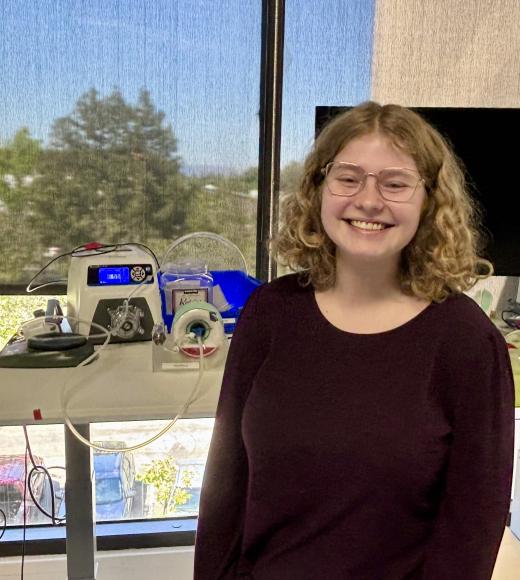Blog: The Value of an Internship as an Undergraduate Student

My name is Kathleen Scott, and I am a biomedical engineering major entering my fourth year at the University of California, Davis, this fall. Currently, I’m a test engineer intern at Willow Innovations Inc., a breast pump company based in Mountain View, California (about a two-hour drive from campus). This is my second summer at Willow, and I’ve learned and grown so much throughout my time here!
I first heard about this internship through my advisor, who sent an email about it to all biomedical engineering majors. As soon as I read the description, I was excited. Part of the reason I became a biomedical engineering major was because of my interest in making a difference in women’s healthcare, making a job at Willow an extremely exciting opportunity for me. Also, Willow’s pumps are completely cord-free and wearable, so I was eager to find out about the engineering behind the technology.
When I got the job, I had no idea what to expect. I quickly learned I would be working with the firmware team. I did not know what firmware was before my internship, but my coworkers were happy to explain. Firmware is software embedded into hardware, so for a breast pump, the firmware instructs the pump on things like what suction level to be at or the motor’s duty cycle.
After I learned more about Willow’s pumps and testing procedures, I started to settle into my tasks as an intern. I had my own project, which led me to learn how to use a soldering iron, a Dremel, a drill press and an Arduino board. I created my own test setup and presented the findings from my test to the engineering team. One of my other tasks was reviewing standard test methods for clarity and ease of testing, as well as running the tests for validation. I also helped verify firmware for release.
I thoroughly enjoyed my first summer at Willow, which is why I was so happy when I got the opportunity to return a year later. During my second summer with Willow, I’ve been able to draw on the knowledge I learned through my upper-division classes at UC Davis.
BIM 108 — Biomedical Signals and Control — helped me become familiar with topics like Fourier transforms and the frequency domain, which were important when I was working with an accelerometer. Also, the Quarter at Aggie Square program for biomedical engineers taught me a lot about the FDA clearance process. When a discussion on regulatory pathways came up during work, I had a firm grasp of what was being said.

One of the clearest indicators of the growth I have experienced at Willow so far is how much I have grown to understand during meetings. I remember my first engineering meeting where I felt like everyone was talking in a foreign language. But now, I understand these discussions and can even contribute to them.
Willow has been an excellent place for me to find my footing as an engineering student. My coworkers are the best mentors; they are always kind to me and willing to explain anything I don’t understand. I’ve been able to increase my level of responsibility since last summer, which has been amazing. For example, I used to only participate in app testing, but now I’m not only running the tests but helping to organize the testers.
I’m so grateful that the first engineering job I’ve had has been such a positive experience!
